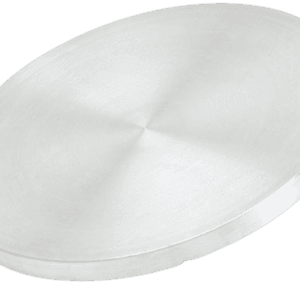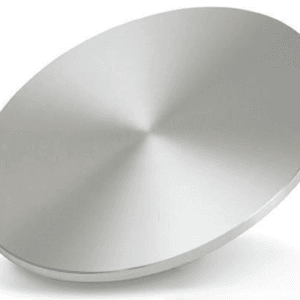| Material Type | Pyrolytic Graphite |
| Symbol | C |
| Atomic Weight | 12.0107 |
| Atomic Number | 6 |
| Color/Appearance | Black, Non-Metallic |
| Thermal Conductivity | 140 W/m.K |
| Melting Point (°C) | ~3,652 |
| Coefficient of Thermal Expansion | 7.1 x 10-6/K |
| Theoretical Density (g/cc) | 2.25 |
| Z Ratio | 3.26 |
| Sputter | PDC |
| Max Power Density* (Watts/Square Inch) | 80 |
| Type of Bond | Indium, Elastomer |
| Comments | E-beam preferred. Arc evaporation. Poor film adhesion. |
Overview of Pyrolytic Graphite Sputtering Targets (C)
Introduction to Pyrolytic Graphite Sputtering Targets
Pyrolytic graphite sputtering targets, symbolized as “C,” are superior to standard carbon graphite targets in terms of directionality and sputtering rate. These targets are produced using Chemical Vapor Deposition (CVD), which allows the material to be grown atom-by-atom, enhancing its thermal, electrical, and chemical properties. The CVD process results in near-theoretical density, making the material essentially non-porous and enabling quick outgassing. Pyrolytic graphite is ideal for high-performance applications requiring enhanced material properties.
Key Properties of Pyrolytic Graphite Sputtering Targets
- Material Type: Pyrolytic Graphite
- Symbol: C
- Atomic Weight: 12.0107
- Atomic Number: 6
- Appearance: Black, non-metallic
- Thermal Conductivity: 140 W/m.K
- Melting Point: ~3,652°C
- Coefficient of Thermal Expansion: 7.1 × 10⁻⁶/K
- Density: 2.25 g/cc
- Z Ratio: 3.26
- Sputtering Method: PDC
- Max Power Density: 80 W/in²
- Bonding Options: Indium, Elastomer
Manufacturing Process
- Refining: Using a three-layer electrolytic process to achieve high purity.
- Melting and Casting: Semi-continuous casting in an electrical resistance furnace.
- Grain Refinement: Engineered microstructure through thermomechanical treatment.
- Final Packaging: Cleaned for vacuum use and protected from environmental contaminants during shipment.
Product Specifications
- Purity: 99.99%
- Circular Dimensions: Up to 14-inch diameter, minimum 1 mm thickness.
- Block Dimensions: Up to 32-inch length, 12-inch width, minimum 1 mm thickness.
Features and Benefits
- High Purity: Ensures excellent performance in demanding applications.
- Refined Grain Structure: Provides superior sputtering characteristics.
- Competitive Pricing: Offers cost-effective solutions for various industries.
- Semiconductor Grade: Perfect for semiconductor and electronic applications.
Applications
Pyrolytic graphite sputtering targets are used in:
- Electronics
- Semiconductor Manufacturing
- Flat Panel Displays
Additional Options
- Carbide Targets: Including Boron Carbide, Hafnium Carbide, Molybdenum Carbide, and others.
- Bonding Services: Available with Indium and elastomer bonding options.
Inquiry Form
Required Information
- Name
- Email ID
- Company Name
- Industry
Optional Information
- Phone Number
- Address
- Country
- Details About Material Requirements





Reviews
There are no reviews yet.